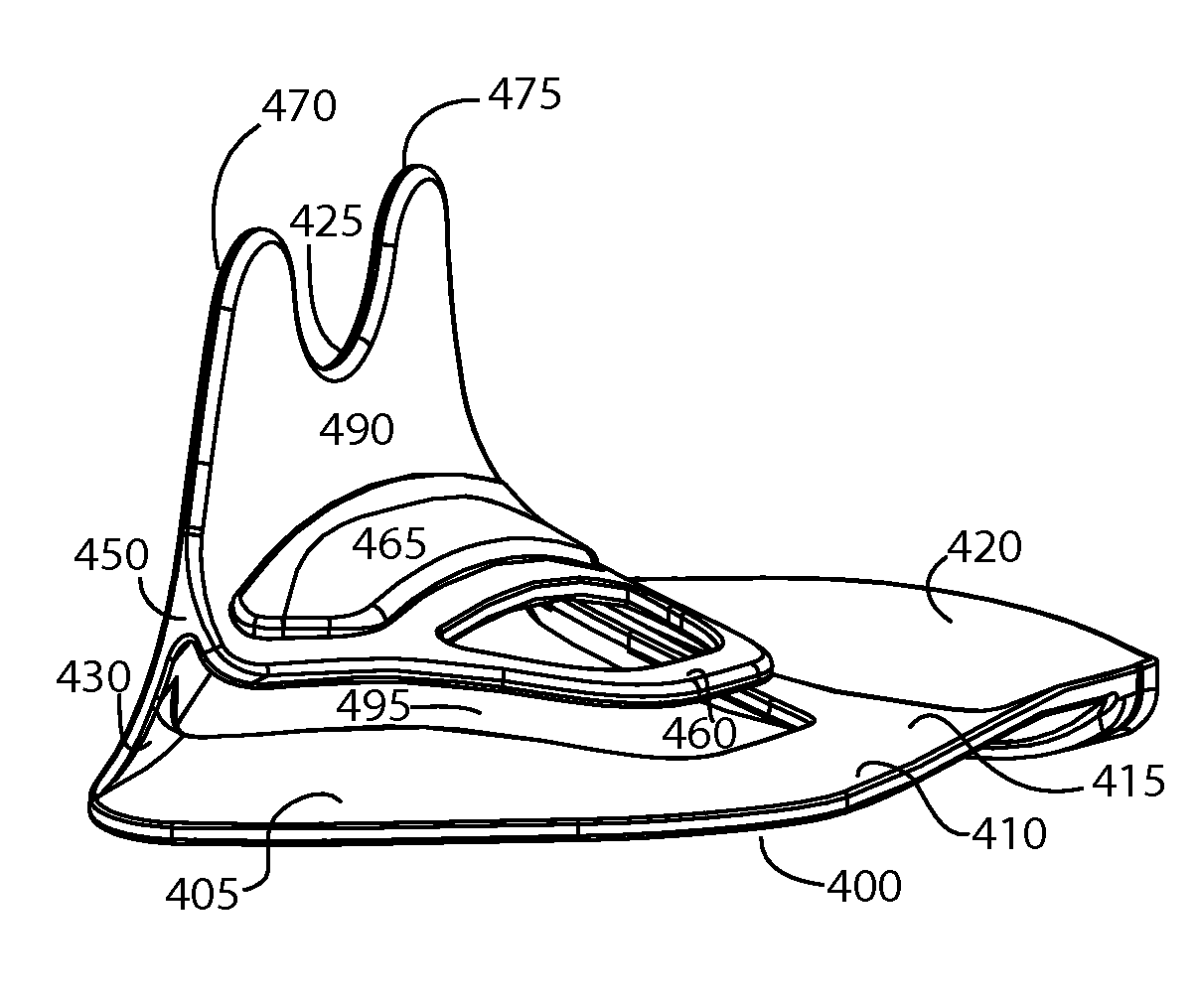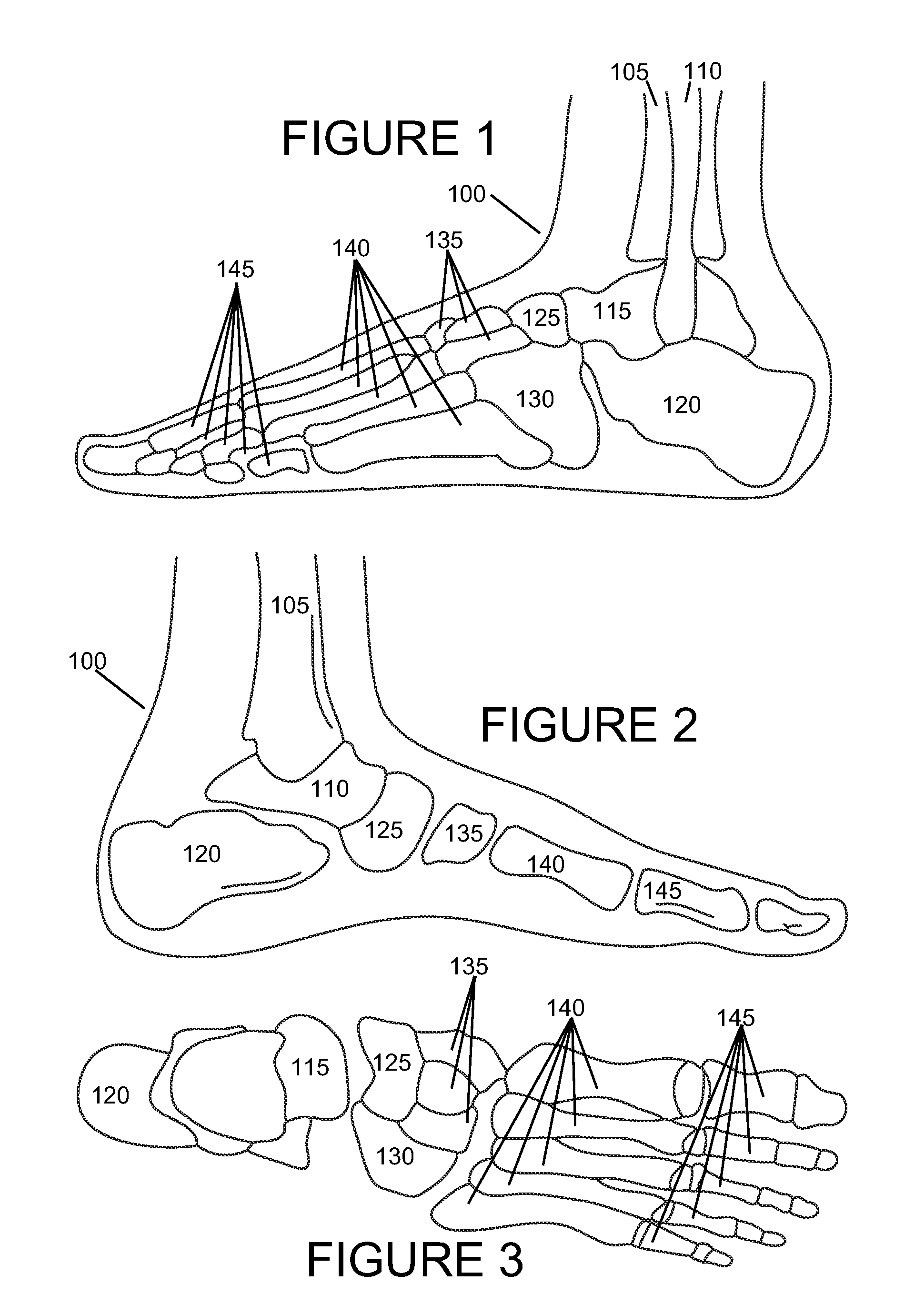Orthtic device and method for providing static and dynamic stability to the medial arch and subtalar bone complex
- Summary
- Abstract
- Description
- Claims
- Application Information
AI Technical Summary
Benefits of technology
Problems solved by technology
Method used
Image
Examples
Embodiment Construction
[0034]With reference to FIGS. 1-3, there is shown a typical human foot 100, and (in FIGS. 1 and 2) the tibia 105 and fibula 110, the two lower bones of the leg. Below the tibia 105 and fibula 110, there is the talus 110 (i.e., the “ankle bone”). Positioned below and rearwardly of the talus 110 is the calcaneus 115 (i.e., the heel bone). Positioned moderately below and forward of the talus 110 are the navicular 120 and the cuboid 125. Extending forwardly from the navicular 120 are three cuneiform bones 140. Extending forwardly from the cuneiform bones 140 and from the cuboid 125 are the five metatarsals 130. Forwardly of the metatarsals 130 are the phalanges 135.
[0035]An exemplary orthotic device according to principles of the invention provides static and dynamic stability to the medial arch by decreasing the effective vertical force applied to the plantar fascia, allowing it to function optimally, while providing dynamic horizontal stability to the subtalar bone complex during gate...
PUM
 Login to View More
Login to View More Abstract
Description
Claims
Application Information
 Login to View More
Login to View More - R&D
- Intellectual Property
- Life Sciences
- Materials
- Tech Scout
- Unparalleled Data Quality
- Higher Quality Content
- 60% Fewer Hallucinations
Browse by: Latest US Patents, China's latest patents, Technical Efficacy Thesaurus, Application Domain, Technology Topic, Popular Technical Reports.
© 2025 PatSnap. All rights reserved.Legal|Privacy policy|Modern Slavery Act Transparency Statement|Sitemap|About US| Contact US: help@patsnap.com



